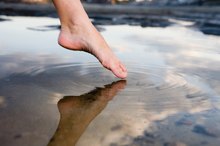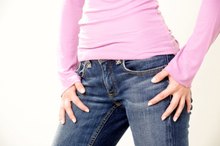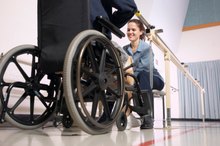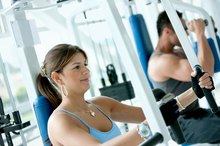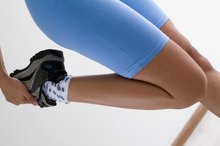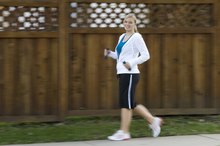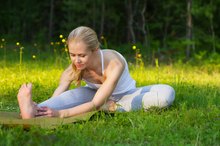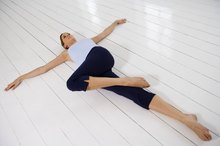How to Strengthen the Patella Tendon
The patellar tendon is located in the knee. The tendons in the knee can become inflamed or ruptured or degenerate over time, causing severe pain in the leg just below the knee cap. This condition is more commonly referred to as patellar tendinitis, also called jumper's knee. Rapid change of direction while running and overuse of the patellar tendon are typical causes of the pain associated with patellar tendinitis. Simple exercises that strengthen the patellar tendon can prevent knee injuries and inflammation.
Put on supportive, athletic footwear before beginning to exercise. Appropriate footwear is important to provide cushioning and support to the knees during motion.
Exercises That Reduce Ankle Swelling
Learn More
Perform the following three exercises regularly to strengthen the patellar tendon and surrounding ligaments and prevent injury to the knee. If traditional exercises are difficult for you to commit to, try yoga. Certain yoga exercises are also beneficial in strengthening the patellar tendon 1.
Ride a stationary bike two to three times per week for 15 minutes. Before riding, be sure to adjust the seat of the bike so that your leg is fully extended on the downstroke. After a week, increase the time to 20 minutes per day. Continue increasing the duration by 5 minutes each week, working towards the goal of 30 minutes per day.
How to Keep From Locking My Knees
Learn More
Sit on the floor with your legs straight in front of you to perform isometric quad exercises. The quadricep muscles are located in the thigh area. Flex the quadriceps by pushing your knees toward the floor and hold the contraction for 5 seconds. This exercise is repeated 10 times per leg and should be performed twice daily.
Lie down on your back to perform this next exercise. Keeping your leg straight, lift the leg at the hip joint and hold for 5 seconds. Slowly lower your leg. Leg raises are repeated 10 times each leg, twice daily. You could also vary this exercise by lying on each side of your body and, again, raising the leg up into the air and holding for 5 seconds. Ten repetitions should be performed for each side, twice daily.
Related Articles
References
- Orthoseek: Knee Strengthening Exercises
- Sports Injury Clinic: Jumpers Knee
- American Academy of Orthopaedic Surgeons. Patellar tendon tear. Updated February 2016.
- ABIM Foundation Choosing Wisely. Physical therapy: Five treatments you probably don't need. 2015.
- Brund RBK, Rasmussen S, Nielsen RO, Kersting UG, Laessoe U, Voigt M. The association between eccentric hip abduction strength and hip and knee angular movements in recreational male runners: An explorative study. Scand J Med Sci Sports. 2018;28(2):473-478. doi:10.1111/sms.1292
- Hearing CM, Chang WC, Szuhany KL, Deckersbach T, Nierenberg AA, Sylvia LG. Physical exercise for treatment of mood disorders: A critical review. Curr Behav Neurosci Rep. 2016;3(4):350–359. doi:10.1007/s40473-016-0089-y
- Belhaj K, El hyaoui H, Tahir A, et al. Long-term functional outcomes after primary surgical repair of acute and chronic patellar tendon rupture: Series of 25 patients. Ann Phys Rehabil Med. 2017;60(4):244-248. doi:10.1016/j.rehab.2016.10.003
Writer Bio
Amanda Ballard Coates is a Certified Professional Coder (CPC) and a member of the American Association of Professional Coders. She is also a freelance writer and photographer. She writes mostly nonfiction and has been published on several informative websites. Ballard Coates' writing has been published on websites such as Healthmad.com, Quazen.com, Gomestic.com and Socyberty.com.
